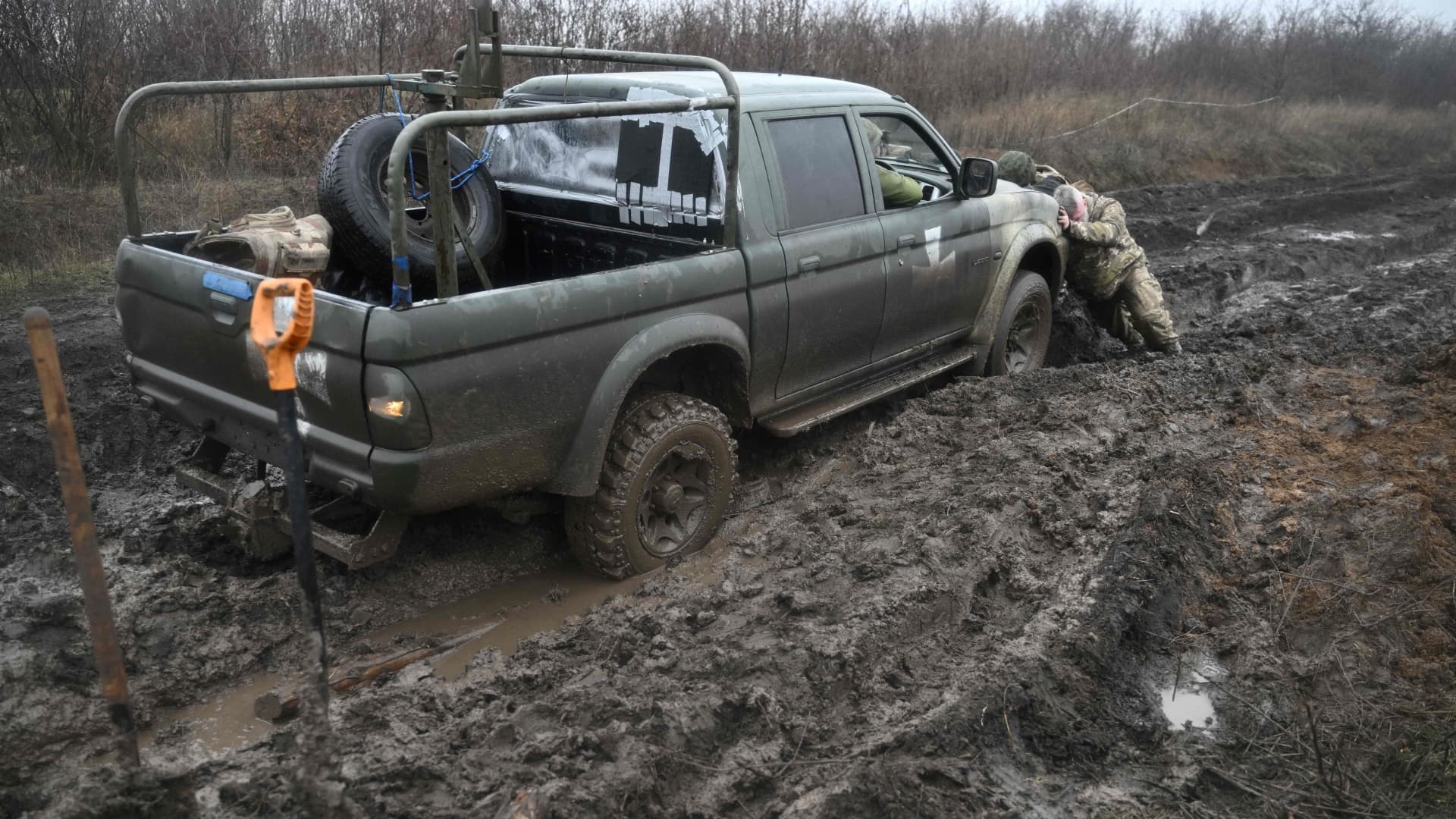Russia is expected to launch a new Ukraine offensive, but it faces a familiar obstacle: Mud
Ukraine's frozen ground is expected to thaw soon, turning the war-torn nation's fields and rural roads into a quagmire for troops and tanks.

Ukraine and many Western analysts believe Russia is on the precipice of launching a new, large-scale offensive but it’s likely to encounter a familiar obstacle: mud.
Frozen ground conditions in Ukraine are expected to give way to a thaw in the coming weeks, turning the war-torn nation’s fields and rural roads into a quagmire for troops and tanks.
Ukraine’s muddy season is so infamous that it has a name, “rasputitsa” — referring to the season that comes in late fall and early spring — and it has surprised various armies over the centuries, from Napoleon Bonaparte’s invasion of Russia in 1812, which was famously slowed by the mud in Ukraine, to Adolf Hitler’s Nazi forces floundering in muddy conditions as they invaded the then-Soviet Union in 1941.
Despite its infamy and annual occurrence, the mud still managed to surprise Russian forces after they invaded Ukraine last February with images and footage online showing Russian tanks and armored vehicles stuck and abandoned in the mud, much to Ukraine’s satisfaction. Needless to say, however, its own forces are not immune to the problem.
While the war has changed since the last muddy spring season — with Russia now concentrating its forces on an expected, large-scale offensive focused on fully occupying eastern Ukraine (and potentially including Zaporizhzhia in the south and the northeastern Kharkiv region) — the arrival of spring is expected to bring familiar challenges for both sides, as well as unknowns around the direction the conflict will take.
“The weather continues to play a significant role in the course of Russia’s war in Ukraine,” the U.K.’s Ministry of Defense said Thursday.
“With the ground frozen, there has likely been little change in cross country mobility (CCM) conditions in eastern Ukraine in recent weeks,” it said in an intelligence update on Twitter.
Over the coming week, however, forecasts suggest soil temperature increases and snow melt are likely to deteriorate cross-country mobility across the Donbas, the ministry noted.
“Cross country mobility is likely to be at its worst, with extremely muddy conditions, over mid- to late-March. Commanders on both sides will highly likely seek to avoid scheduling major offensives at such times,” the Defense Ministry noted.
“However, perceived political or operational opportunities can override such concerns, as demonstrated by Russia launching its invasion in late-February 2022.”
War changing
Some Western observers thought the freezing winter in Ukraine would provide an opportunity for both Russian and Ukrainian forces to regroup and rearm ahead of spring offensives but the fighting has remained intense, particularly in the Donetsk and Luhansk areas of eastern Ukraine.
Analysts say Russia will launch a new, large-scale offensive within the next couple of weeks and could look to make gains before the “rasputitsa” sets in.
Max Hess, fellow at the Foreign Policy Research Institute, noted the spring “rasputitsa” is more of a challenge than the autumnal one as it becomes “even more difficult for vehicles and materiel to travel through given the thaw of the frozen earth and snowpack.”
“That being said, the current state of the fronts is rather different to what was seen in late autumn with lines consolidated over the winter,”






















